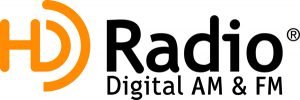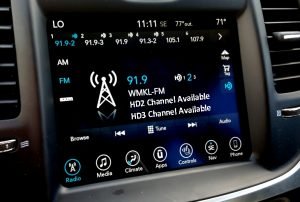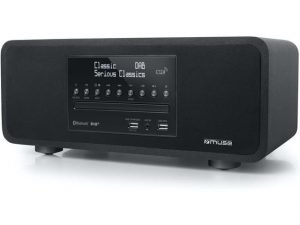
This blog begins a short series examining the newest over-the-air broadcasting technology in North America – HD Radio. This descriptive term is in actuality a trademark of the for iBiquity‘s in-band on-channel (IBOC) digital radio technology used by AM and FM radio stations to transmit audio and data by using a digital signal embedded “on-frequency” immediately above and below a station’s standard analog signal. In this introduction, I’ll examine the positives of this emerging digital transmission, and also the many over-riding negatives of this system chosen by regulators the FCC & now Canada’s CRTC as the standard to be used. As always, I will oversimplify some descriptions & definitions for the sake of brevity, and to not get mired in overly technical details of no interest or comprehension by many of our readers.


Although adopted by the US & Canada, HD transmission is not the only system in use in today’s world. The far superior Eureka-147 DAB+ system is widely in used in Europe, Asia & Pacific nations. The DAB+ system uses a separate band of frequencies than AM or FM broadcasters with dedicated home & mobile receivers widely available & affordable. In EU countries this has become quite popular & some nations have now discontinued broadcasting analog signals by their government/national/public radio stations in favor of DAB+ only. Recently the EU parliament declared that all new vehicles sold in these countries must now contain DAB+ in addition to AM & FM as choices for users. Canada initially adopted the Eureka-147 system & for a brief period of time a number of broadcasters there adopted simultaneous DAB broadcast capabilities. Close to home & north of the “dotted line”, a number of Vancouver stations initially set up for Eureka-147 in the high micro-wave band of frequencies. At a demonstration by Nautel of Nova Scotia – a widely known manufacturer of radio transmission equipment – with a dedicated receiver & small dish-antenna, I was part of a group in Vancouver privileged to hear the results, which were nothing short of stunning & a far cry from the “bandwidth-challenged” HD signals from Seattle broadcasters using IBOC. However, for many reasons we will examine, Canada’s inept & non-responsive broadcast regulator – the CRTC – made the incredible mistake of not supporting this new technology & allowed Canadian stations to discontinue their DAB+ broadcasts & remove their transmission equipment. Even more stunning was the CRTC’s subsequent adoption of the US iBiquity HD IBOC system which is now getting adopted & used by some Canadian broadcasters. Yet another digital radio transmission system is gaining traction, particularly in southeast Asian countries, India & now a few African nations. Digital Radio Mondiale (DRM) is another system compatible with simultaneous FM or AM broadcasting. Receivers are available in these countries that can switch between analog or DRM transmission. Since short-wave broadcasting is still used in some of these countries to reach sparse, rural populations, DRM has become popular as a means of improving the deficiencies inherent to broadcasting on those wavelengths. I’ve had a chance to sample short-wave DRM signals thanks to a friend who recently acquired an Asian-only portable receiver & am impressed by the improvements to reception. It should be noted that none of these systems are compatible with one another & all require receivers built for individual methods.

I’ll begin with a brief overview of the positives and negatives of HD, which will be elaborated on in future blogs on the topic. Let’s start with the positives: The IBOC HD system allows broadcasters to utilize the new technology while still maintaining an analog signal for reception by the majority of radio listeners. On the FM band, it creates a second & third separate channel that can be programmed with alternate programming sources distinct from the main signal. Most newer motor vehicles sold in North America over the past 5 years have had HD radio capabilities in addition to analog reception & other options. Perhaps HD’s greatest strengths will be providing service to mobile listeners as opposed to home or office users. HD-2 & HD-3 channels are providing a new means for struggling AM broadcasters to reach listeners with a quality, digital signal thanks to corporate owners with multiple station licenses on both FM & AM. These additional HD channels are also providing a means of revenue-generating data stream transmission for broadcasters that have nothing to do with radio listeners, but everything to do with with providing a means for paid commercial users to move data via non-Internet means.

Sangean’s high-end home receiver
And now a brief look at the negatives. In researching for this blog series, I have unfortunately discovered far more negatives & disadvantages associated with HD IBOC technology in usage here, than positive attributes. Injecting my opinion into this topic, I have a tough time seeing a successful future for HD in the evolution of broadcasting in this country. Starting with the broadcast regulators here, they have made a poor choice of transmission systems. To the credit of the FCC & CRTC, neither have plans to eliminate analog broadcasting on AM or FM, forcing listeners to abandon analog receivers for digital-only units as has occurred for TV. However, neither agency has done anything whatsoever to educate or promote HD to the public. Ditto the broadcasters themselves – particularly the large corporate owners that dominate station ownership. Equally at fault are the motor vehicle manufacturers and especially the car dealerships. I have friends who are retired broadcasters that have purchased vehicles in recent years, were totally unaware their dashboard receivers contained HD, and discovered quite by accident that their favorite listening on the road was via HD! The cost of HD-ready &/or hybrid analog/digital transmitters are prohibitive to smaller commercial outlets & listener-supported community & campus broadcasters. Another costly issue with HD is power consumption. A number of public broadcasters have determined that HD transmitters require a 30% increase in power usage, and have since turned off their HD equipment as they struggle with ever tighter operating budgets based on diminishing listener financial support & the reduced money from CPB. Small commercial “indie” broadcasters face a similar struggle. Real engineers are often required to tame some of the issues associated with hybrid analog-HD transmission, particularly when feeding translators via HD signals & translated as analog. This is way beyond the capabilities of the lower paid, unqualified “plug-n-play screwdriver-jockey” IT or technical staff now employed at most stations instead of engineers. The days of well-paid, in-house qualified broadcast engineers is way behind us thanks to FCC deregulation & the “cut, cut, cut” mantra of today’s corporate broadcasting owners. HD is an “all or nothing” method of transmission. That is, “now you hear it, now you don’t” Unlike analog FM or AM signals that get weaker, increasingly static-filled, or barely audible as one moves away from the antenna, HD broadcasts at full steam until it’s signal abruptly disappears at a defined point beyond the transmitting antenna. This ignores the rural populations of North America while providing a signal to urban dwellers. While desirable from a ratings or sales standpoint, this hardly ensures emergency, evacuation orders, EAS, or ‘Amber Alert’ information reaches listeners outside the cities. Both FM & AM broadcasters have discovered that HD can actually increase interference to, and degrade their analog signals which are received by the majority of their over-the-air listeners. The reasoning for each is different, but nonetheless a factor when broadcasters consider adding HD transmission. The number of HD-capable vehicle radio manufacturing continues to increase, however, the same cannot be said of home/office receivers. While a small number are still on the market, a number of companies including Sony, LG, Boston Acoustics & others have discontinued their models due to lack of sales. Sangean, with it’s HDT-20 home tuner-receiver & table radio WR-2 are among the few higher-end HD units currently available. And finally, the programming opportunities that potentially exist for broadcasters with their HD-2 & HD-3 signals, to nobody’s surprise, have not been utilized as significant enhancements to the programming available on station main channels. In tandem with this statement, is the distinct lack of promotion by broadcasters that such alternate choices are offered.

Nautel VS-300 HD FM transmitter
Whether HD radio in the long-term is a positive step in the evolution of the airwaves, it remains a viable choice for broadcasters willing to make the investments & retain the personnel needed to make it a success in spite of a number of obstacles. In particular, HD has the potential to enhance vehicle/mobile listening for stations exploiting such opportunities. The FCC & the radio industry itself must get more agressive educating & marketing HD as a listening option. It otherwise will become yet another technological throw-away as radio & TV broadcasting increasingly moves to the Internet & streaming. Next time, I’ll examine the HD-2 & HD-3 programming offered on Puget Sound stations.

Muse M-785 AM/FM/DAB+ home “boombox” receiver


Some comments may be held for moderation. (New users)